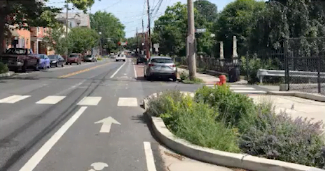The City of Lancaster, Pennsylvania comprises approximately 7.4 square miles with an estimated population of 60,000. As with many historic urban town centers, the City is highly impervious and approximately 50% of the City is served by combined sewers. During wet weather events combined sewage flows exceed the capacity of the Advanced Wastewater Treatment Plant and combined sewage is discharged directly to the Conestoga River. The Conestoga River is a tributary of the Susquehanna River which discharges to the Chesapeake Bay.
The City has developed an integrated approach to reduce the impacts of these pollutant sources through the use of green infrastructure (GI) and is achieving cost savings and significant levels of implementation by integrating GI programs with its core public works practices. In 2010 and 2011, the City prepared a green infrastructure (GI) plan, one of the first to be adopted in by a city in the U.S. Since then, the City has been implementing a GI program that incorporates green infrastructure in a cost-effective, adaptive, and systematic manner into public capital improvement projects and as part of certain private projects. Through the City’s program, GI systems have been implemented as part of 75 projects which collectively manage about 55 acres of impervious area through a variety of project types such as: Green Alley/Street, Parking Lot, Green School, Green Park, Public Property, Green Roof, and Private.
In 2018 and early 2019, the City developed an update to its original GI plan based on its implementation experience, new impervious area data, updated hydraulic and hydrologic modeling results, and current City initiatives related to pavement management and improved mobility and quality of life. This paper will provide an overview of the City’s progress over the last 10 years, summarize the planning analyses completed in 2018 as part of the GI plan update, and highlight some of the current large-scale GI efforts that are underway.
This presentation will present detailed case studies for a number of impactful GI projects that have been implemented within a range of settings, both public and private. The case studies will demonstrate how locations are selected for green infrastructure projects, as well as the design challenges, costs, and maintenance considerations for many successfully completed projects in locations such as public parks and schools, green streets and alleys and parking facilities. This presentation will also explore various lessons learned and unique design solutions of successful green infrastructure implementation.
About Instructors






